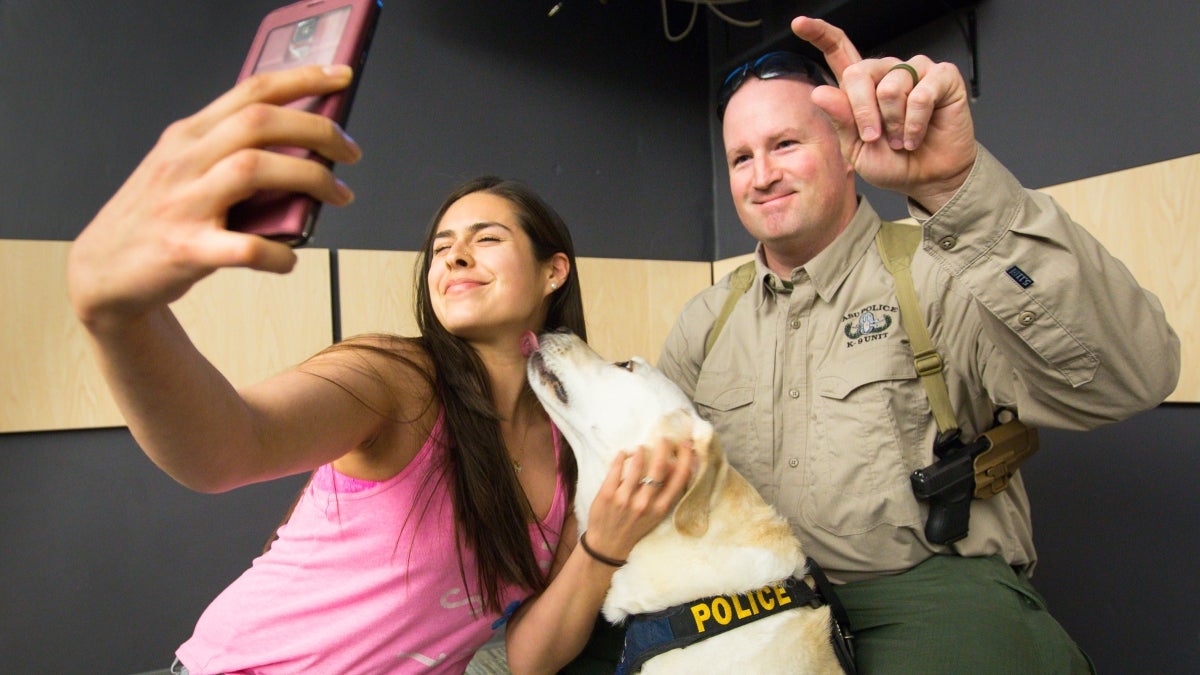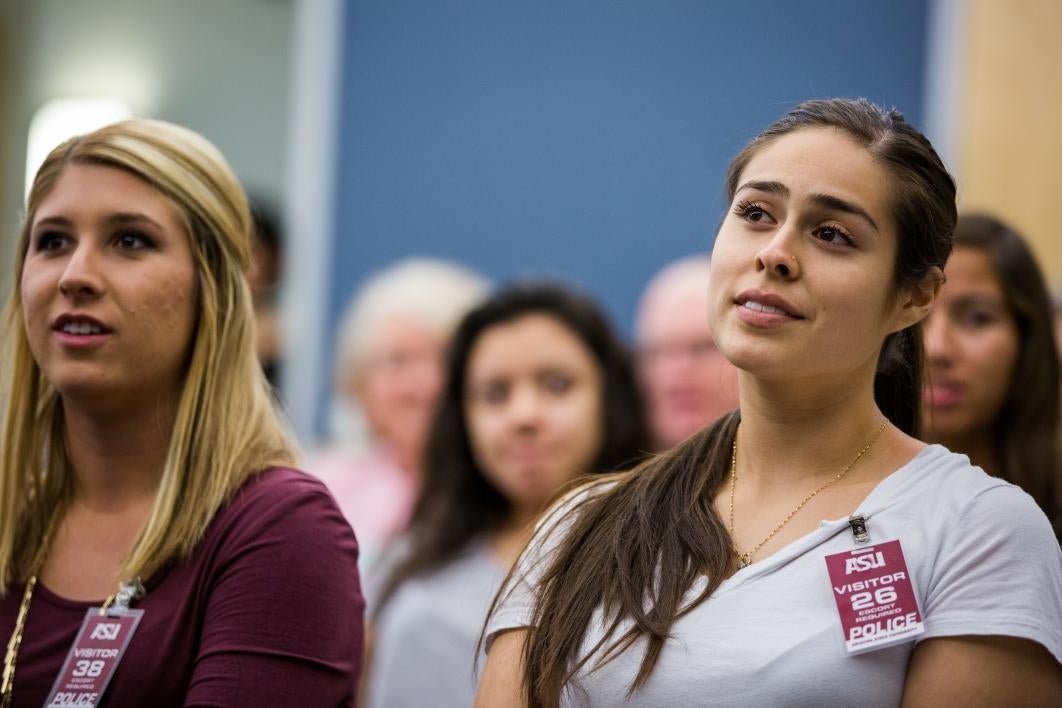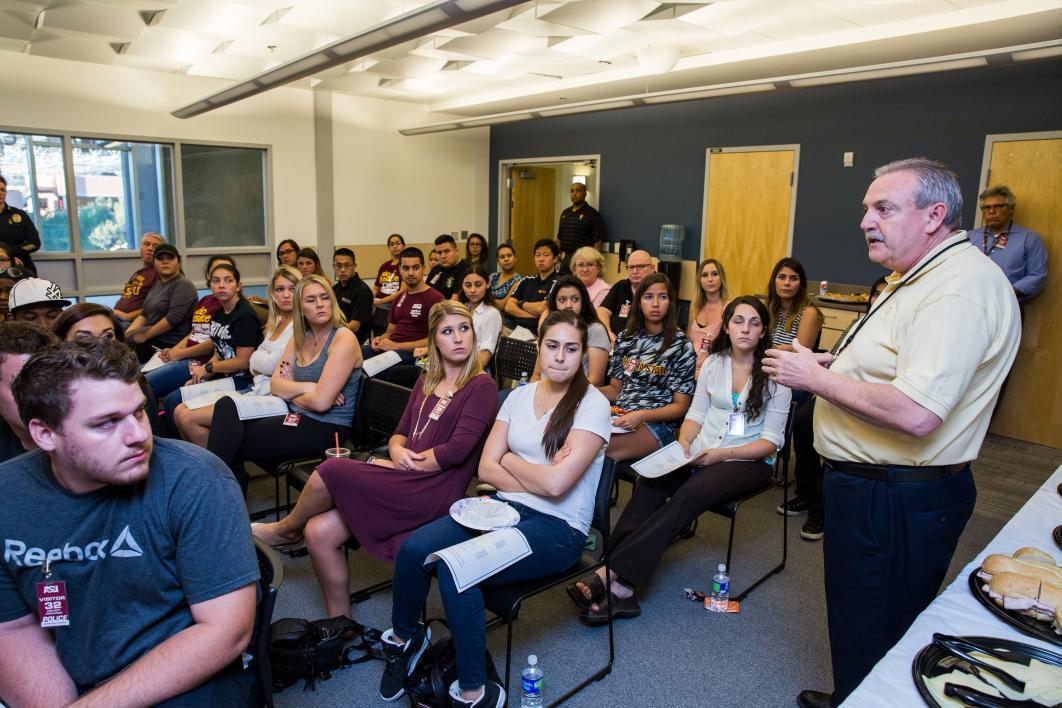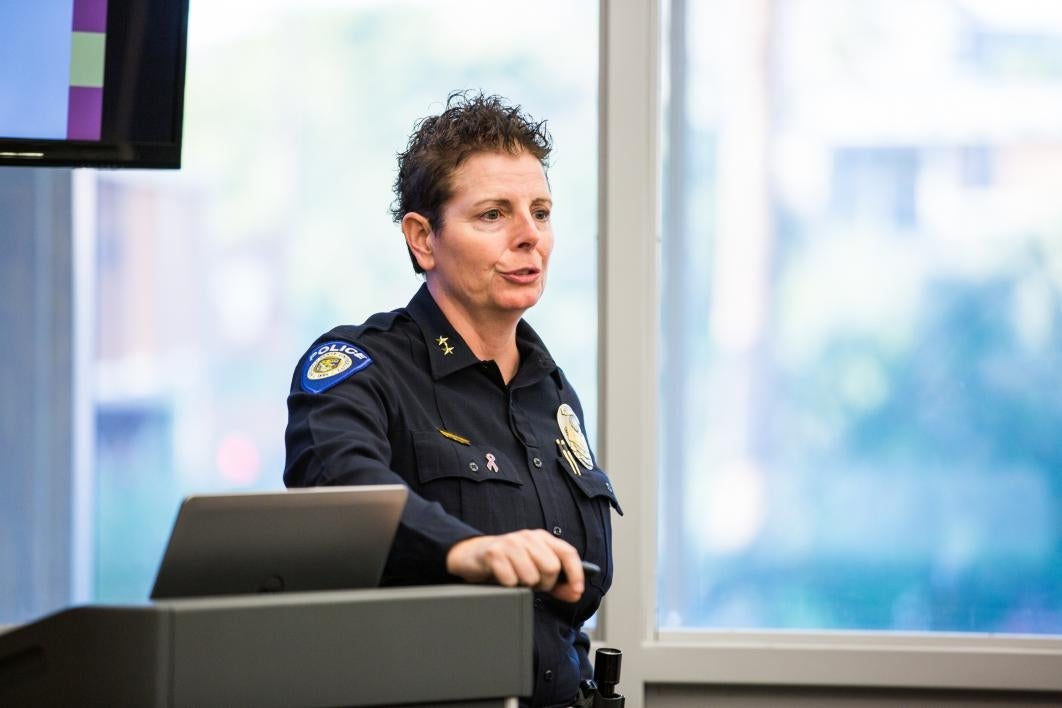They may patrol the campus mall. They may bust some sweet Segway moves. But don’t mistake them for mall cops.
The Arizona State University Police Department (ASUPD) is an independent, fully functional arm of the greater Arizona police force. It’s been in operation since 1948, but for the first time, the department opened its doors Oct. 14 and 21 to host a two-day course detailing the inner workings of the university’s peacekeeping agency.
As the public’s demand for transparency and accountability from the law enforcement agencies that serve them has grown, ASUPD’s top officials decided that a community police academy would be the best way to clear up the cloud of mystery that can surround law enforcement agencies, especially at a college university.
“The whole concept of people not understanding what we do for our community was really driven home to me about five years ago,” said Michele Rourke, commander of the West campus. “I was in the elevator at Computing Commons going up to meet someone and a lady gets on and a gentleman gets on. The lady looks at me and says ‘Is something going on?’ I said, ‘No, I’m just going to meet somebody and talk about an issue.’”
“So, are you with Tempe [PD]?”
“No, ma’am, I’m with ASU. Are you new to the community?”
“No, I’ve worked here 12 years and I never knew we had a police department,” the lady replied.
To shed some light on the day-to-day operations of ASUPD, students, faculty and staff in attendance were greeted with presentations from every facet of the department’s operations including counselors, detectives and dispatchers.
Over the course of the two days, one of the biggest points the academy drove home was that the job of an officer entails a great deal more than just enforcing the law. For example, ASU hosts approximately 1600 special events a year — an average of more than four per day — all of which are reviewed by a two-man branch of the department that determines if an event requires a police presence.
“If we were to follow an officer around all day, you would probably find that a majority of their shift has nothing to do with law enforcement,” said ASUPD police chief Michael Thompson. “It’s to do with assisting our community members, making contacts on campus, taking a report, helping somebody work through an issue, especially on a university campus.
“When I would sit down with police officers that had just been hired on to the department, I would tell them, 'Look, if you have some delusion or some aspiration of rappelling down a helicopter with a machine gun on, then this is not going to be the environment for you to do that in.'”
Thompson emphasized that his department has the tactical resources at its disposal if necessary, but doesn’t see the need for full-time use.
One of those tactical resources isn’t an it, but a she: Officer Disney, a highly trained munitions detection and disposal expert with years of experience working high-profile events across the country like Super Bowl XLV in Arlington, Texas. She also sniffed out a key piece of evidence in a local bank robbery last month.
Disney is, without a doubt, the most popular officer in the entire department. But because she is a yellow Labrador who won’t hesitate to kiss everyone she meets, she tends to have a couple legs up on her colleagues. She is one of the few bomb-sniffing dogs in the area and frequently lends her services to police departments around the state. Her partner, detective Parker Dunwoody gave a demonstration of Disney’s bomb-detecting capabilities during the second day of the academy.
Shortly afterwards, attendees received a completion certificate and a newfound understanding of the stresses, motivations and methods that drive ASU’s peace officers.
“I thought it was very helpful and very informative. I definitely got information I don’t think I would’ve sought out otherwise,” said 19-year-old interdisciplinary studies major Alexa Jimenez. One of her concentrations is homeland security, and she hopes to work for a government law enforcement agency in the future. “It opened up my eyes to a lot of opportunities. I feel very secure about my career and what I want to do.”
The police department is now working on developing an expanded, seven-week version of the academy in partnership with the School of Criminology and Criminal Justice. It’s all a part of including the community and increased transparency, said police chief Thompson.
“What transparency leads to is trust, what trust leads to is cooperation, cooperation then leads to involvement,” Thompson said. “The closer I can get to my community the happier I am. I think that’s how we — as a country, and law enforcement agencies in general — will make progress."
More University news

School of Molecular Sciences faculty member honored for contributions to photochemical sciences
Regents Professor Ana Moore, acclaimed faculty member of the Arizona State University School of Molecular Sciences, has been named the 2025 recipient of the prestigious George S. Hammond Award from…

ASU program recognized as a Center of Actuarial Excellence
Arizona State University’s actuarial science program is now recognized by the Society of Actuaries as a Center of Actuarial Excellence (CAE).There are currently 242 actuarial science programs across…

Edison Awards announces Michael M. Crow as 2025 Achievement Award honoree
FORT MYERS, Fla. — The Edison Awards, an organization dedicated to honoring the world's most innovative new products and services, is pleased to announce Michael M. Crow, president of Arizona…






